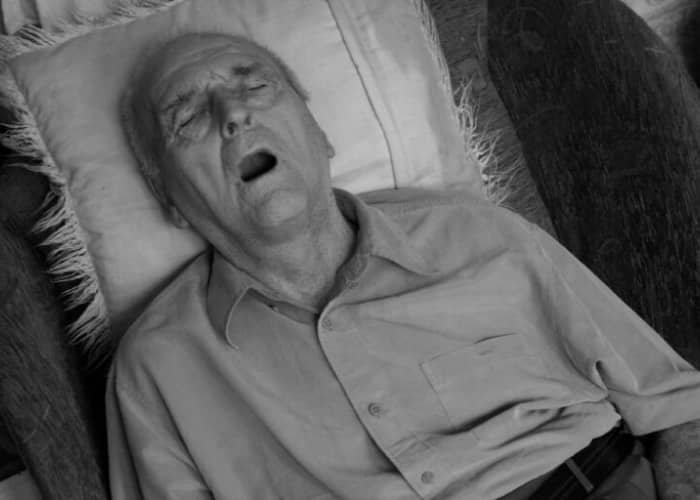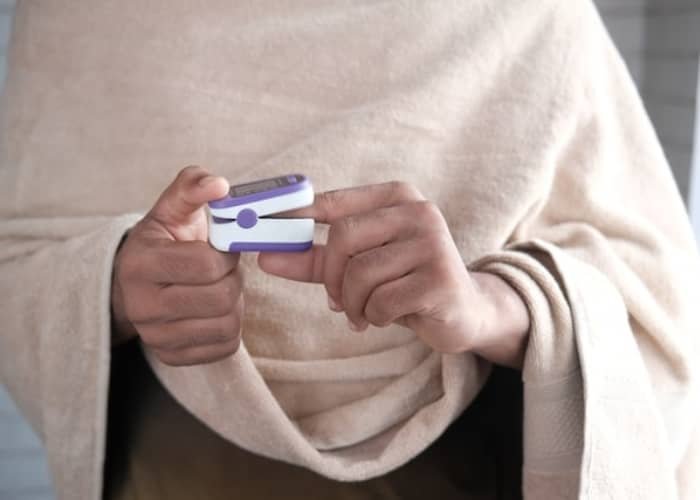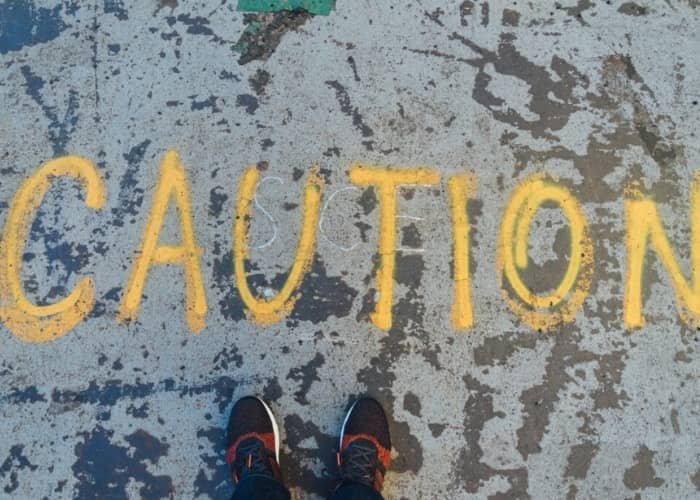In the article: ‘Normal oxygen level during sleep‘, we talked about what it means by oxygen levels in the blood, different oxygen saturation points, and normal oxygen levels for different scenarios.
Oxygen level, in essence, is the amount of oxygen that attaches to hemoglobin molecules in your blood. Hemoglobin is the red-colored pigment in the blood responsible for carrying oxygen from the lungs to the tissues.
When the amount of oxygen in the blood saturates (maximum quantity) up to 95-100%, it is a safe level in adults. But when this level drops below 95%, the person should rush to the hospital immediately. For a newborn baby up to a couple of days of age, the level could be 92-93% saturation (also called SpO2).
It is fascinating to know how the normal level of a newborn can be the fatal level for an adult.
But guess what is more fascinating to note? It’s the oxygen level in your blood during sleep. It is way lower than in adults or even newborns.
Even though it is safe to some extent, there are times that it can be alarming that you need to be wary of. At those times, you get sleep apnea. This possibility of oxygen dropping, even more, can be extremely serious.
What Does Low Oxygen Level During Sleep Cause?
Low oxygen levels (Hypoxemia) during sleep mostly cause difficulty in breathing during sleep which is also called “Sleep Apnea”. It can be dangerous for you since the brain takes a maximum of 4-5 minutes before shutting down if it doesn’t get enough oxygen.
During sleep apnea, your breathing can stop due to throat muscles relaxing. It happens so because the airway through which gases enter and leave gets blocked or other chemical composition changes in your blood lead up to problems in breathing.

Main Causes of Sleep Apnea:
- Fat accumulation around the neck
- Anatomically lower jaw
- Sleeping position
- Being assigned male at birth
- Cigarette smoking
- Alcohol or drugs abuse
- Usage of tranquilizers and sedatives
- Family history
When various reasons cause the respiratory passage to jam, it is called Obstructive Sleep Apnea. As you would’ve guessed, reasons like excessive fat around the neck, throat muscles relaxation, or health conditions like goiter can be a cause of this.
And when the communication between the respiratory center in the brain and the lung muscles alters, it is called Central Sleep Apnea. This one is comparatively rare.
How To Measure Your Normal Oxygen Level

After the onset of Covid-19, the necessity of knowledge on oxygen levels and measurement became so common. Almost every second person became aware of oxygen saturation levels and the importance of maintaining them.
If you had an emergency during the lockdown in 2020 and visited a public place, then you must have seen that device they plug your index finger to. That device is a pulse oximeter that measures blood oxygen level and pulse rate by sending infrared rays into the capillaries. It is a non-invasive device to measure your blood oxygen level.
There are 2 readings on a pulse oximeter: Pulse rate and oxygen saturation in the blood (SpO2).
To use one, all you do is attach your fingertip to it and it gives you the readings. Although, it cannot give other data related to blood it gives an idea of your oxygen saturation level.
How To Treat Sleep Apnea

Before any treatment, it is important to figure out if any symptoms match. Thus, for reference (not for medical diagnosis purposes), here are the symptoms of sleep apnea:
- Coughing or snoring in sleep
- Choking or gasping sound during sleep
- Feeling excessively sleepy during daytime
- Being unable to focus
- Abnormal breathing pattern
- Fatigue or sluggishness in the waking state
- Early morning headaches
Only the bed partner can notice the symptoms that occur during sleep (which is obvious). But if you live alone and want to know if you have sleep apnea then you can get Polysomnography(sleep study) done.
You can take several measures to reduce the chances of having sleep apnea. Some common ones are below:
- You can start exercising to lose excessive fat (if you have). This helps with easier breathing in sleep. Also, your body gets a better oxygen supply if you exercise regularly.
- Your doctor can tell you to use a Continuous Positive Airway Pressure(CPAP) machine which helps in creating air pressure to let oxygen reach your lungs.
What Oxygen Levels Are Considered Dangerous During Sleep

If your oxygen level is between 95-100% when you’re awake, your oxygen level would likely drop below 90-92% (also called ‘hypoxemia’) during sleep.
This can be dangerous if it stays the same for a long time (up to 40 seconds or 1 minute) and occurs frequently. Sometimes, the level can go below 85% which is highly dangerous. In such cases, blood pressure on the right side of the heart and the amount of carbon dioxide diffused in the blood increase. This may cause acidity in the blood and a condition known as “respiratory acidosis”.
“Chronic Obstructive Pulmonary Disease” (COPD) is a group of diseases that lead up to this condition.
Thus, you know that any level below 95% for long in your blood can cause many problems in your body and can be fatal.
Read More:
- How And When to Measure Normal Blood Oxygen Level in Humans
- How to Get Up Early – 9 Steps To Success At Getting up in the Morning
FAQs
Ans. Apologetically, no. The data given above is extracted from various sources and taken on an average scale. This article is to inform everyone about changes in oxygen levels during sleep as simply as possible.
Ans. Low oxygen levels during sleep essentially cause difficulty in breathing, also called “Sleep Apnea”. This condition can lead to severe consequences and should be treated with the help of a doctor immediately.
Ans. To get more oxygen in sleep, you can change your sleeping position. You can lie on your stomach with your legs stretched and your head to one side. Put both your hands on top of the pillow beside your head. Doing so can help with better breathing.
Ans. If they’re snoring loudly or gasping in sleep, you can nudge them and ask them to change their sleeping position. And if they’re coughing in sleep, immediately wake them and sit them up. You should take the situation seriously and hurry them to a nearby emergency medical service.











